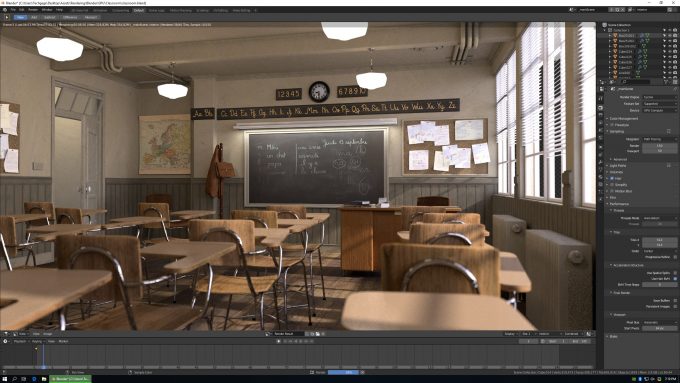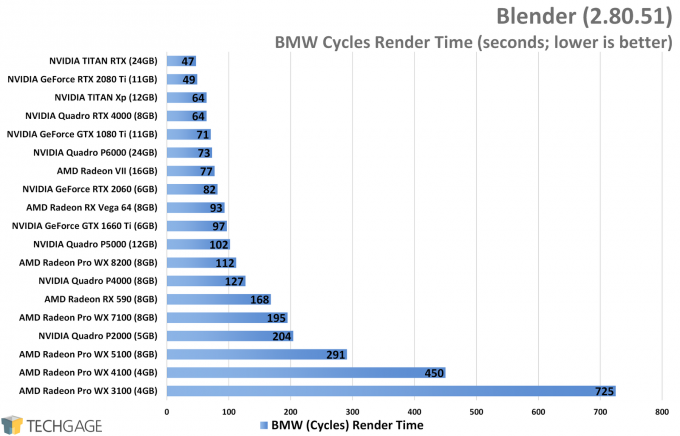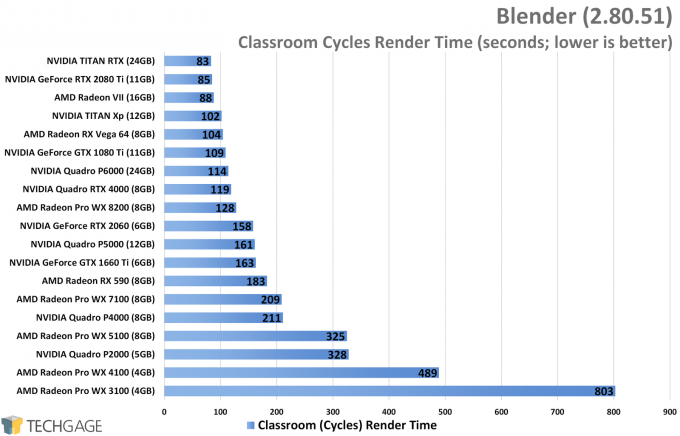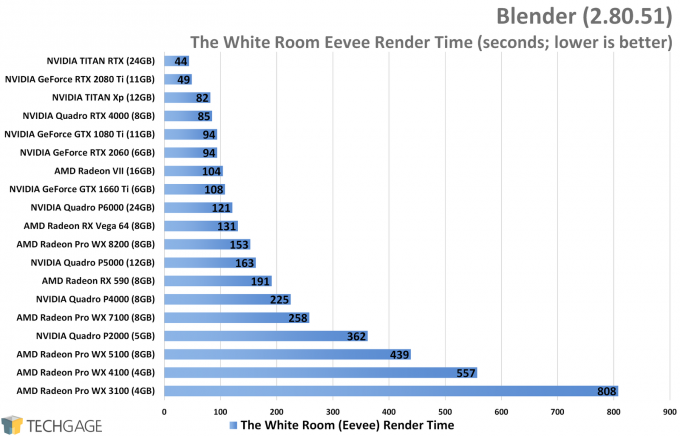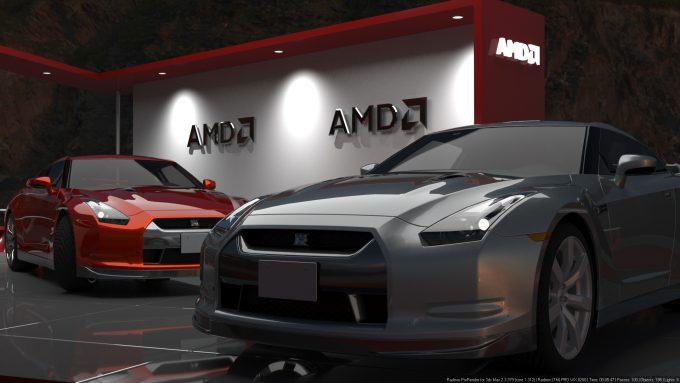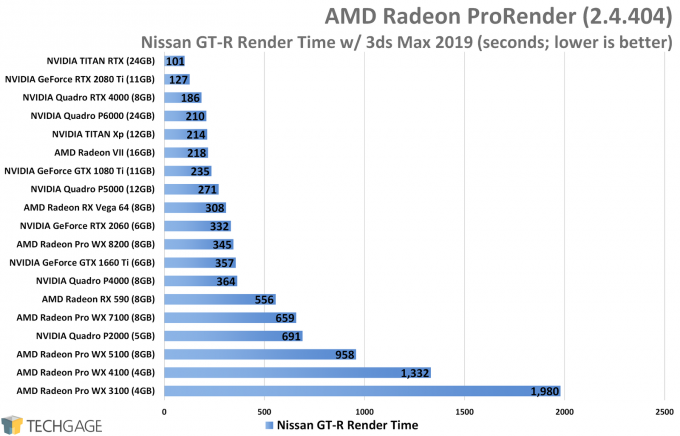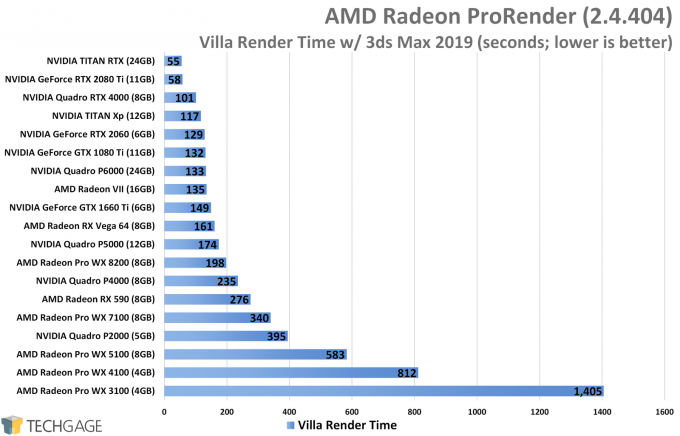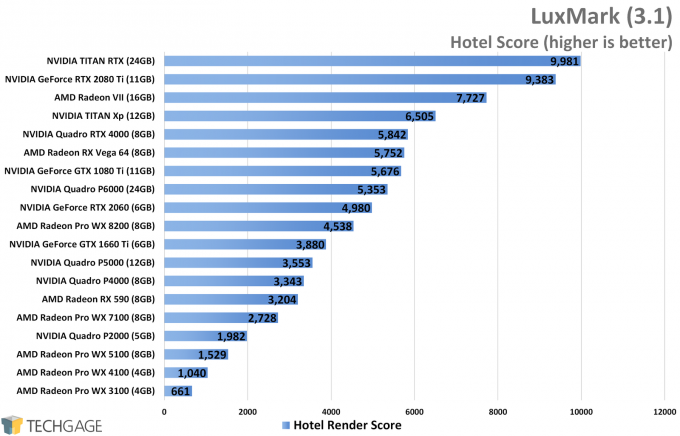- Qualcomm Launches Snapdragon 4 Gen 2 Mobile Platform
- AMD Launches Ryzen PRO 7000 Series Mobile & Desktop Platform
- Intel Launches Sleek Single-Slot Arc Pro A60 Workstation Graphics Card
- NVIDIA Announces Latest Ada Lovelace Additions: GeForce RTX 4060 Ti & RTX 4060
- Maxon Redshift With AMD Radeon GPU Rendering Support Now Available
NVIDIA TITAN RTX Workstation Performance Review

NVIDIA’s TITAN RTX means business – and a lot of it. This jack-of-all-trades graphics card caters to those with serious visual computing needs, whether it be designing and rendering 3D scenes, or poring over repositories of photos or other data with deep-learning work.
Page 3 – Rendering: Blender, Radeon ProRender & LuxMark
Blender
As we learned during our massive benchmarking run with a Blender 2.80 beta a couple of months ago, NVIDIA’s Turing graphics cards are fast as heck in Blender. It’s no surprise, then, that the TITAN RTX takes a win here, with the 2080 Ti again falling not far behind.
Blender 2.80’s final release is coming very soon, and we’ve already retested a bunch of hardware using the currently available release candidate. We hope to deliver much more in-depth Blender performance not long after 2.80’s launch, so stay tuned for that.
Radeon ProRender
We’ve seen multiple times in the past that NVIDIA’s graphics cards are super-strong performers in AMD’s Radeon ProRender, and there hasn’t been an exception made in this testing. While the TITAN RTX didn’t get much of a lead in the villa render against the RTX 2080 Ti, it gained handsomely with the car render.
Unfortunately, ProRender is one application that’s going to skip out of our test suite for a little bit, since the latest version of the plugin (2.5) does not cooperate with our projects, either for CPU or GPU rendering. We’re hoping that with SIGGRAPH up ahead, a 2.6 (or beyond) version will be announced there, and miraculously fix our issues.
LuxMark
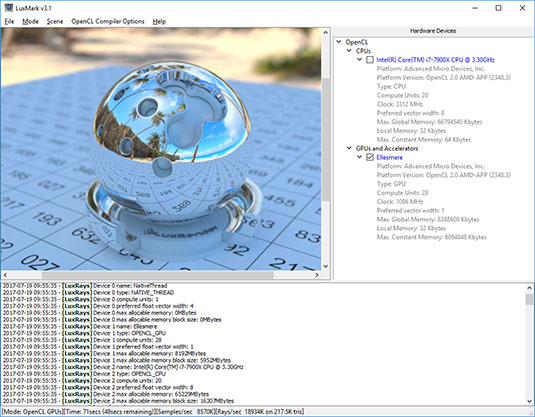
We recently wrote that AMD may be EOL’ing its Radeon VII, and in some ways, it’s really too bad the company never marketed it towards the professional market instead. In many ways, it’s a very powerful GPU, and it really struts its stuff with the LuxBall render test here.
When the going gets tougher, such as with the more complex Hotel render, the VII falls behind a bit, giving a strong lead to the top gaming RTX and TITAN RTX cards.
Support our efforts! With ad revenue at an all-time low for written websites, we're relying more than ever on reader support to help us continue putting so much effort into this type of content. You can support us by becoming a Patron, or by using our Amazon shopping affiliate links listed through our articles. Thanks for your support!




